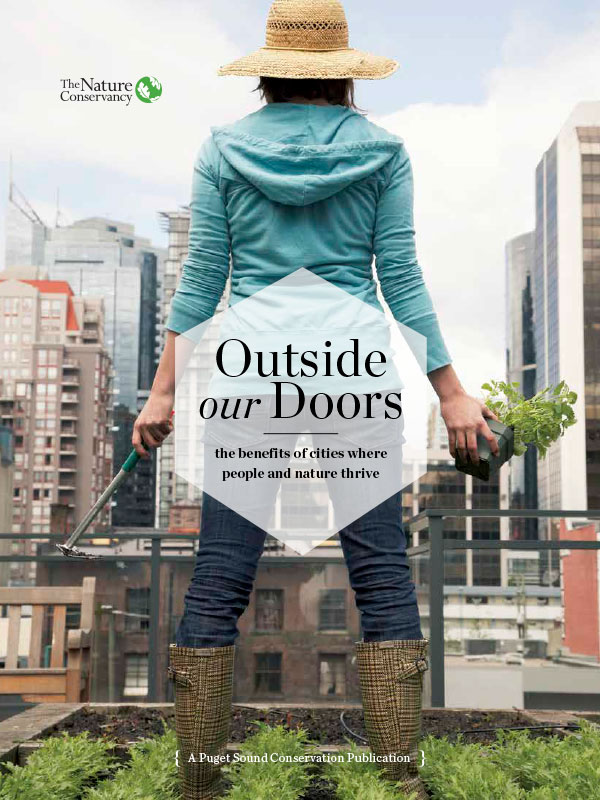Report
Outside our Doors: the benefits of cities where people and nature thrive
Publication Date:
We are pleased and honored to introduce this milestone report from The Nature Conservancy. The authors have worked carefully to present a comprehensive analysis of current evidence on how our human communities need nature in and around them to thrive. This report presents a panoramic view of how our cities and towns benefit from nature—on the streets, next to schools and hospitals, outside our windows; everywhere people are, we can benefit from nature.
In 1865, landscape architect Frederick Law Olmsted was convinced that beautiful green spaces should exist in cities for all to enjoy. He wrote, “It is a scientific fact that the occasional contemplation of natural scenes of an impressive character... is favorable to the health and vigor of men and especially to the health and vigor of their intellect.”
While Olmsted’s claim of “science” was based on intuition, he was on to something. Today, nearly 40 years of research reveal that nearby nature supports a wide range of positive health outcomes for people.
As natives of the Puget Sound region, we each have witnessed a place that has changed dramatically in recent decades—in culture, economy, and nature. Today it is a place of contrasts. It is a combination of bold, dramatic landscapes contrasted by rapidly growing cities that are testing sustainability innovations in ways that have captured the attention of other nations. It is a region that leads the country for economic growth, but is still challenged to raise the economic standard for many underserved communities. It is a place that promotes the latest technology practices for commerce, medicine, and learning, and also sustains ancient cultures of numerous tribes that have called the Salish Sea home for millennia.
This report addresses these conditions and challenges. Many people recognize the restorative and therapeutic effects of nature, but many assume these benefits are found beyond the city—that one must travel out of the urban mix for positive experiences and benefits. In fact, there is a wealth of evidence that nature is critical within and around the city itself.
The evidence supporting how natural infrastructure helps people thrive is published across many journals representing numerous academic and scientific disciplines. It can be difficult to identify and access. By bringing together the information into a single document, our hope is this report will make it easier for communities to conserve and create high quality green spaces that support human health and well-being.
The Puget Sound is wonderfully different than the place either of us experienced as children. It is more complex, more diverse, and facing greater challenges. Like the generations that have come before us, we must apply the big thinking, imagination, and passionate energy the world has come to expect from the peoples of the Puget Sound.
We hope this report inspires efforts to integrate nature into our cities in ways that strengthen ecological services and make our neighborhoods greener, safer, more livable, more equitable, and more resilient. As our region continues to grow, there is no better time to come together across sectors, embrace this approach as a norm, and step up our commitment to ensuring the Puget Sound region thrives long into the future.
